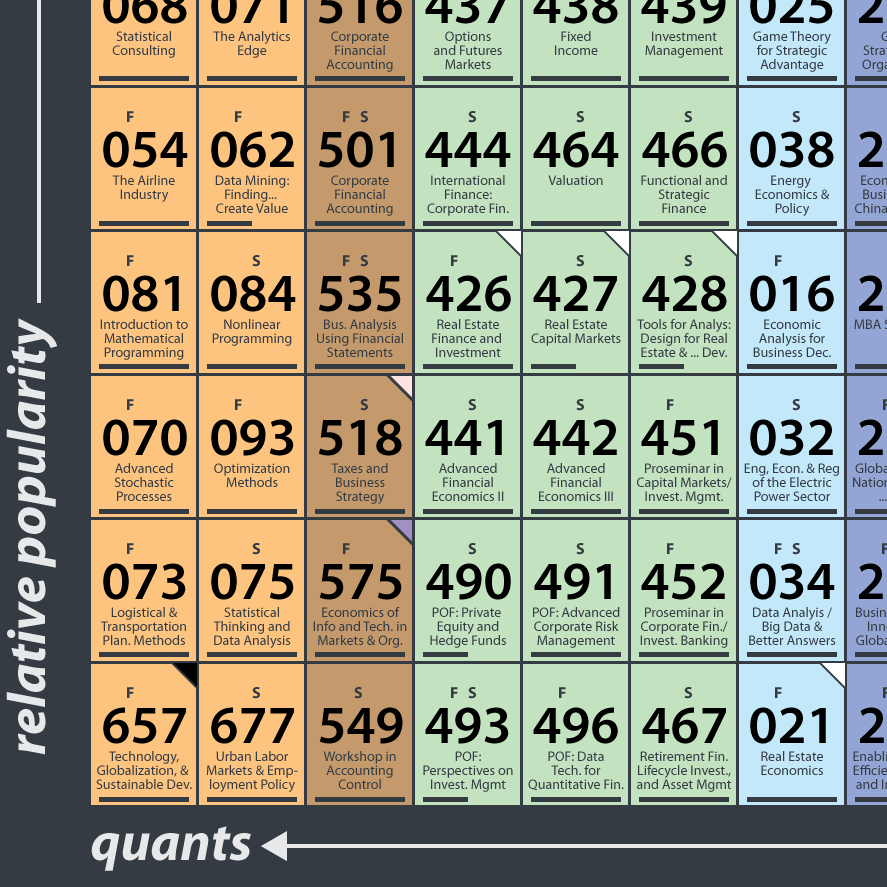MIT and class names
For the unfamiliar, numbers rule at MIT, and classes are no exception.
Classes are housed in departments, known as "courses", each with their own number. Course 15 is Management, and belongs to the Sloan School of Management. Each management class listing begins with 15. and is followed by three more numbers, e.g. 15.515 = Financial Accounting.
Motivation
During my first go-around in college I didn't get to take many electives because all of my time was eaten up by a full engineering load. I remember getting to take one history class freshman year. Returning to the ivory tower for graduate school was quite the opposite experience and I found picking classes to be extremely stressful for many of my classmates. We had to wade through multiple spreadsheets and PDFs, interview upperclassmen, and often rely to mob mentality as we registered for classes. While many of the materials that facilitated this process (and fueled this post) were comprehensive, they often presented a narrow view of what the school had to offer: great for picking courses for a single semester, but not enough to for a student to design an entire degree worth of classes.
Details on the Design
Classes are represented as elements and are arranged & colored according to topic areas (accounting, finance, economics...). Inside each box is the class number, title, semester available (during 2013), whether it is a full or half-semester class, and if the class is part of the infamous MBA core curriculum. If the class has a shared focus with another topic area, that is noted with a tag of color in its corner.
The classes are arranged first within their topic areas - with generally more popular classes within a topic area in the top rows (or periods, hence the name) and less popular classes in the bottom rows. I assigned popularity based on class capacities and my own recollection of buzz on campus. The topic areas are arranged with more quantitative topics to the left (quants) and less quantitative topics to the right (poets) - although this designation does not suggest anything about the students who take any particular class, just hints a little at the nature of the topic area collectively.
I have added Sustainability and Real Estate as topic tags as these are themes that run through multiple topic areas, although neither has a separate topic of its own.
MIT Sloan has a special class designation, the Special Seminar in Management (or simply SSIM), for classes of a more experimental nature that are new or just don't fit into any of the traditional buckets. These classes are prefixed with an S before the course number. I have placed them where the lanthanides and actinides are traditionally placed on the real periodic table.
This design certainly isn't complete (e.g. course credits would be a useful addition, but is a little data-intensive for a first-pass). I look forward to your comments, feedback, and enthusiasm!
Info We Trust is a data adventure exploring how to better humanize information. To learn more read the opening post here. The creator, RJ Andrews, is an engineer and proud Northeastern University and MIT graduate. Please reach out through facebook, twitter @infowetrust, or the contact page.


No comments.